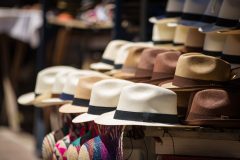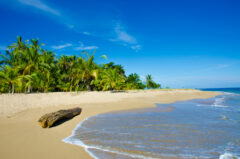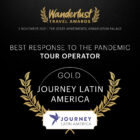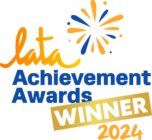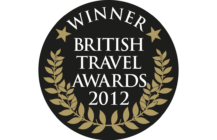Paddle Power

The wind is getting stronger and the waves higher.
As a sailor I can recognise the brisk little squalls charging across the surface of the sea; if I was in a boat, this would be fun. But I’m in a sea kayak – at 14 inches deep, I’m not so much on the water as in the water – and this is the first day of a four-day trip up the west coast of Espiritu Santo ('Holy Spirit') island just off Baja California in the Sea of Cortez, and my second day of sea kayaking ever.
The Sea of Cortez, the narrow but menacingly deep channel of water between the 1000-mile long Baja peninsula and mainland Mexico, was described by Jacques Cousteau as “the world’s aquarium”.
It’s one of the most diverse marine areas in the world, containing 31 marine mammal species (one third of the world’s whale and dolphin species), 500 species of fish and more than 200 bird species. It’s also a very fragile ecosystem, under pressure from developers on both sides of the sea. This is why Espiritu Santo, a 23,300-acre island 20 miles offshore from La Paz in the southern end of Baja, was bought by the Nature Conservancy for $3.3m in 2003, when it became a protected area.
The west coast of Espiritu Santo is a series of sandy coves divided by rocky headlands and when we’re not kayaking we’ll be pitching tents on one of the island’s 20 deserted beaches. In our time off we can practise rescues and rolls, go for hikes into the rocky interior of the island or snorkel among tropical fish, including poisonous pufferfish and stingrays.
Day two begins with a six-mile paddle to Candelero or Musteno beaches, two of the most attractive beaches on the island. Despite mild aquaphobia, with every stroke I appreciate the pleasure of paddling more: it’s all I can do to not race off towards the horizon like a clockwork toy. As we surf into the bay with the tide at the end of the day I can see stingrays gliding along the sea floor and there’s a deep silence apart from the gurgle of water under my bow.
There’s an art to kayaking and stringing a series of perfect strokes together brings the same joy as surfing. Steering is by foot-operated pedals, which turn the kayak’s rudder left and right, although the more stylish kayakers control direction with their paddles. Buoyancy comes from two chambers (fore and aft) – confirming that the neoprene and plastic covers are closed is part of the morning’s pre-kayaking checks.
The longer a kayak, the faster and more stable it may be in rough seas: my 17-foot fibrelass Seaward Tyee is a middle-of-the-road model and enthusiasts will spend thousands on sleeker, carbon-fibre kayaks. Our average speed is two miles per hour.
Our final day brings the biggest test, a 2.5 mile open water crossing between Espiritu Santo and the smaller Isla Partida, where a sea lion colony will provide the afternoon’s entertainment. After just three days I might not yet be as comfortable in the water but I’m confident enough to relish the challenge of the crossing and attack the bigger waves. The discovery of Baja California in 1536 was conquistador Hernán Cortés's last great adventure, but I think I will be back for more.
Tailor-made holidays
Flexible, custom-made holidays to Latin America created to match your exact requirements: our tailor-made itineraries are as unique as the clients for whom they are designed.
Design my tripPapagaio
Your edit for Latin American inspiration
Our exciting range of articles on Latin America explore everything from iconic destinations and lesser-known cultural gems to delicious traditional recipes. You’ll also find exclusive travel tips, first-hand client reviews and the chance to get your personal questions answered by our travel experts.
View Extraordinary Inspiration

